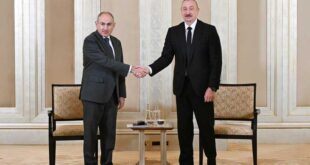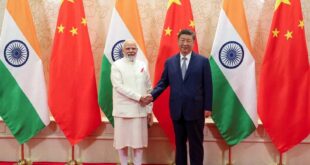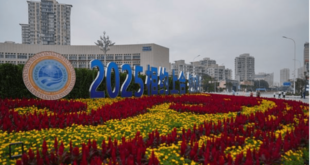By Shehab Al Makahleh
A few years ago, I had the privilege of sitting down with Professor Jeffrey Sachs, one of the world’s leading economists and a sharp observer of global geopolitics. Sachs shed light on a revelation as stark as it is alarming: Syria was part of a seven-country plan outlined by Israeli Prime Minister Benjamin Netanyahu to systematically dismantle governments in the Middle East. According to Sachs, Netanyahu’s influence on U.S. foreign policy has already resulted in the successful overthrow of six out of these seven nations. Now, only one remains in their sights: Iran.
Syria was not just another country in this agenda. It is a land uniquely endowed with extraordinary resources, culture, and economic potential, making it both a jewel in the Middle East’s crown and a primary target in the region’s geopolitical battles. Syria is a nation capable of supporting a population of 80 million with a personal income among the highest in the world. Yet, today, it remains mired in conflict, its riches contested by foreign powers and internal divisions.
Syria’s natural resources read like a catalog of global wealth. The Conoco gas field alone can sustain over 20 million people, while the Al-Shaer oil field in Homs could meet the country’s energy needs and enable surplus production for export. The Suwaidieh and Rumeilan gas fields, often compared to Qatar’s capacity, underscores Syria’s potential as an energy superpower.
In Deir Ezzor, the Al-Ward and Al-Taym fields and the T2 station on the Iraq-Syria oil pipeline and Al-Jafra are no less than any important field in the Gulf states. Al-Omar and Al-Tanak oil fields represent some of the largest reserves in the Middle East, with production so abundant that engineers fear environmental damage if pumps exceed 40% of their capacity. The Al-Taym oil field, with proper management, could elevate Syrian incomes to levels comparable to European or Gulf nations. Beyond hydrocarbons, Syria is blessed with rare ore materials, unparalleled silicon reserves, and a maritime gas field near Latakia that rivals some of the largest in the region.
Syria is not just an energy powerhouse; it is an agricultural giant. It ranks third globally in solid wheat production, second in olive and olive oil output, and among the top producers of citrus fruits like oranges and lemons. Its fisheries, phosphate reserves—regarded as the best in the world—and cotton production add to its vast agricultural wealth.
Culturally, Syria is a living museum, holding over 30% of the world’s documented history. From ancient cities like Palmyra to the ruins of Ugarit, where the first alphabet was created, Syria stands as a unique global tourist attraction. Were peace to prevail, its tourism potential alone could be transformative for its economy.
Perhaps Syria’s most underappreciated asset is its population. Over 75% of its people are young, representing a dynamic and capable workforce that could fuel an economic renaissance. With proper governance and investment, Syria’s demographic advantage could rival that of any emerging market.
Despite these extraordinary advantages, Syria remains a battleground for global powers. As Sachs pointed out, its fate has been shaped not by the will of its people but by external agendas. The U.S., influenced by Netanyahu’s vision, has supported efforts to fragment Syria’s government and divide its territory. Meanwhile, the country’s natural wealth has become a prize in a game of geopolitical chess, with foreign actors seeking control over its resources.
The consequences of these interventions are devastating. Millions of Syrians have been displaced, the nation’s infrastructure is in ruins, and its people are denied the prosperity that their land could so easily provide. Even as talks emerge involving that some countries want to use Syria as a corridor for transporting oil and gas to Europe, these discussions often exclude the very people who live on and depend upon this land.
If Syria is to reclaim its potential, it will require a monumental shift in both internal governance and external relations. It will need to wrest control of its resources from foreign actors and invest in its young population, its infrastructure, and its industries. The international community, rather than treating Syria as a pawn in their broader strategies, must recognize its potential as a cornerstone of Middle Eastern stability and prosperity.
In the end, the story of Syria is a cautionary tale about the cost of geopolitical ambition and the resilience of a nation that remains, despite all odds, a hidden giant. As Sachs warned, the destruction of Syria is not just a tragedy for Syrians; it is a loss for the world. It is time to change the narrative and let Syria rise—not as a target, but as a beacon of possibility.
 Geostrategic Media Political Commentary, Analysis, Security, Defense
Geostrategic Media Political Commentary, Analysis, Security, Defense





